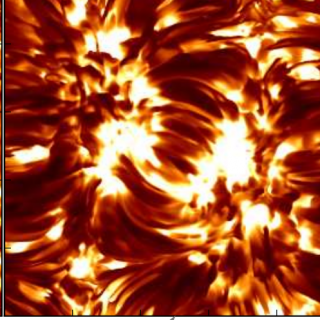Bibcode
Song, Donguk; Ishikawa, Ryohko; Kano, Ryouhei; McKenzie, David E.; Trujillo Bueno, Javier; Auchère, Frédéric; Rachmeler, Laurel A.; Okamoto, Takenori J.; Yoshida, Masaki; Kobayashi, Ken; Bethge, Christian; Hara, Hirohisa; Shinoda, Kazuya; Shimizu, Toshifumi; Suematsu, Yoshinori; De Pontieu, Bart; Winebarger, Amy; Narukage, Noriyuki; Kubo, Masahito; Sakao, Taro; Asensio Ramos, Andrés; Belluzzi, Luca; Štěpán, Jiří; Carlsson, Mats; del Pino Alemán, Tanausú; Alsina Ballester, Ernest; Vigil, Genevieve D.; Leenaarts, Jorrit
Referencia bibliográfica
Solar Physics
Fecha de publicación:
10
2022
Revista
Número de citas
8
Número de citas referidas
8
Descripción
We have developed an advanced UV spectropolarimeter called Chromospheric LAyer SpectroPolarimeter (CLASP2), aimed at achieving very high accuracy measurements (<0.1% at 3 σ ) of the linear (Q /I and U /I ) and circular (V /I ) polarizations of the Mg II h and k lines (280 nm). CLASP2 was launched on board a NASA sounding rocket on April 11, 2019. It successfully detected the full Stokes vector in an active-region plage and in the quiet Sun near the limb across the Mg II h and k lines for the first time. To verify the polarization characteristics of CLASP2, the response matrix is estimated by combining the results obtained from the preflight calibration on the ground, with the results of the inflight calibration acquired at the solar-disk center. We find that the response matrix of CLASP2 in the Mg II h and k lines is notably close to an ideal response matrix, i.e., the scale factor and the crosstalk terms are close to 1 and 0, respectively. Moreover, the uncertainty of each Stokes parameter estimated by the repeatability of the measurements is verified to be within the required tolerance. Based on our investigation, we conclude that CLASP2 achieves 0.1 % polarization accuracy at a 3 σ level.
Proyectos relacionados

Magnestismo Solar y Estelar
Los campos magnéticos son uno de los ingredientes fundamentales en la formación de estrellas y su evolución. En el nacimiento de una estrella, los campos magnéticos llegan a frenar su rotación durante el colapso de la nube molecular, y en el fin de la vida de una estrella, el magnetismo puede ser clave en la forma en la que se pierden las capas
Tobías
Felipe García

Magnetismo, Polarización y Transferencia Radiativa en Astrofísica
Los campos magnéticos están presentes en todos los plasmas astrofísicos y controlan la mayor parte de la variabilidad que se observa en el Universo a escalas temporales intermedias. Se encuentran en estrellas, a lo largo de todo el diagrama de Hertzsprung-Russell, en galaxias, e incluso quizás en el medio intergaláctico. La polarización de la luz
Ernest
Alsina Ballester